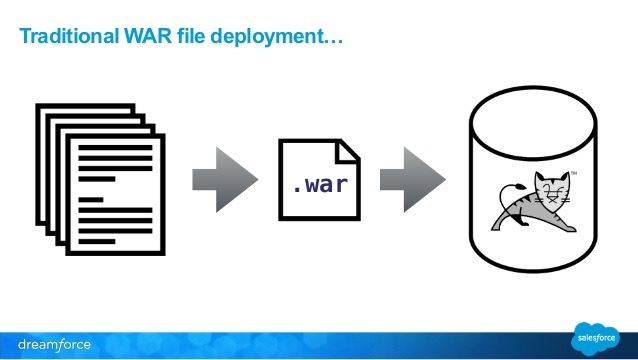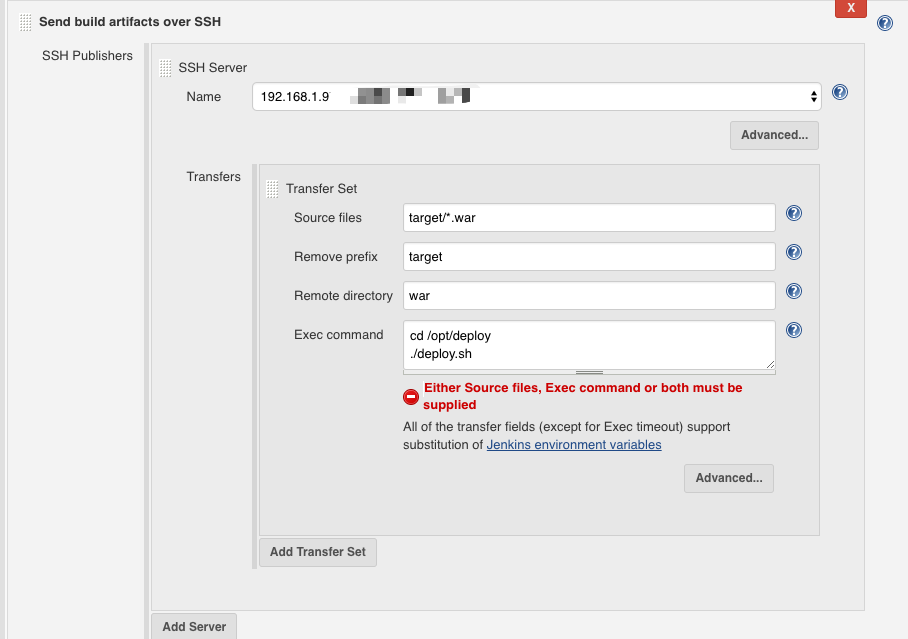For JAVA web development, if you choose Tomcat container, it’s generally WAR package deployment

For Jenkins WAR package deployment, there are two approaches: one is installing the Deploy to container plugin, the other is writing your own shell script solution. I chose approach 2 here for two reasons:
- The Jenkins plugin itself has low activity, meaning if there are any issues, you’re stuck. Currently it only supports up to Tomcat 7.x
- The plugin uses Tomcat-manager module for direct deployment, which I believe has poor performance
So, without further ado, let’s get started!
WAR Package Transfer to Target Server
File transfer uses Publish Over SSH, here I’m transferring to /opt/deploy/war
Writing Deployment Script
vi /opt/deploy/deploy.sh#!/bin/bash source /etc/profile cd /tmp/deploy/war jar -xvf *.war rm -f *.war \cp -rf * /usr/local/tomcat/webapps/ROOT/ rm -rf * systemctl restart tomcatNote: I’m using Centos 7.x here, so service restart uses
systemctlchmod +x deploy.sh
Jenkins Build Task Configuration

Final Thoughts
Shell scripts implement the specific execution details of the build, while Jenkins provides hooks and mechanism support. This combination solves deployment and provides great flexibility. This way, we only need to focus on programming, while the tedious build and deployment work is handed over to robots, saving us a lot of time. This is the purpose of DevOps.

